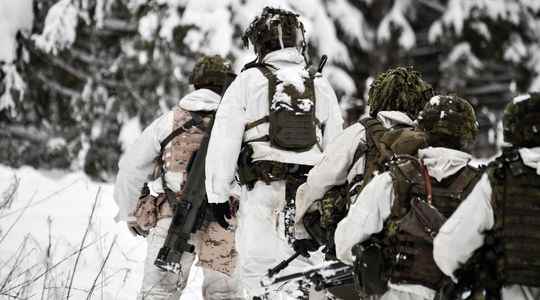The sound of Russian boots woke NATO up with a start. A first detachment of American soldiers arrived in Romania on Tuesday to reinforce the Eastern front of the Alliance, amid fears of an attack by Russia against Ukraine. Anxious to calm the concerns of some of his allies, US President Joe Biden last week approved the deployment of 3,000 additional troops to Europe – including 1,700 in Poland, 1,000 in Romania and 300 in Germany.
The day before, Berlin had for its part announced the dispatch of 350 soldiers to Lithuania to support the Alliance in Northern Europe, while Denmark placed one of its battalions mobilized by NATO on alert. Even France – which advocates European strategic autonomy – had mentioned at the end of January the deployment of “several hundred” soldiers in Romania as part of a NATO operation.
Difficult years
It is an understatement to say that the Atlantic Alliance has come a long way, weighed down in recent years by internal divisions and challenges, sometimes shattering. No one has forgotten Emmanuel Macron’s formula, diagnosing his “brain death” in 2019. Three years earlier, Donald Trump, still a candidate for the White House, had begun this undermining work, calling NATO a “obsolete”. His election had cast doubt on the reliability of the American security guarantee.
More recently, Turkey – a member of NATO since 1952 – had undermined the unity of the Alliance, between the purchase in 2017 of Russian anti-aircraft missiles S-400, its military operation launched in 2019 in Syria against the Kurdish forces allied with Westerners, or even its provocations in the Mediterranean against Greece.
The chaotic withdrawal from Afghanistan, after 20 years of Western presence, had finished blackening the picture. “This is the biggest debacle that NATO has suffered since its creation and it is a change of era that we are facing”, had slammed the German Armin Laschet, at the time president of the Christian Union Democrat (CDU). “There have been questions about the role of NATO and its usefulness for several years, observes Olivier Kempf, associate researcher at the Foundation for Strategic Research. But the current crisis around Ukraine has given it a new lease of life. purpose.” As an air of homecoming for the Atlantic Alliance, created in 1949 to protect Western Europe against Soviet expansionist tendencies.
“The great reference in terms of safety”
In fact, the Kremlin’s demands on the end of NATO’s enlargement policy and the withdrawal of its military resources from Eastern Europe have been rejected outright by Westerners. “Through this crisis, Putin has obtained the opposite of what he was looking for. He reminded NATO members that the Russian threat remains persistent, not only for Ukraine, but also for the whole system. European security”, points out Alexander Vershbow, researcher at the Atlantic Council and former deputy secretary general of NATO.
In Sweden and Finland, both non-members of the Alliance, pressure from Moscow has rekindled discussions on the possibility of joining NATO – if the need arises. “The European security order is non-negotiable. In Sweden, we determine our own foreign and security policy and decide with whom we choose to cooperate,” Swedish Prime Minister Magdalena Andersson said in early January. Same outcry in the Baltic countries. “We will not agree to any agreement that would negatively affect Estonia’s security or undermine NATO’s collective defense,” Estonian Prime Minister Kaja Kallas had warned in mid-January, multiplying calls for strengthening the presence of the allies. in Northern Europe. “This crisis shows that the Alliance is still considered the great reference in terms of security in many European countries”, summarizes Alexander Vershbow.
Sustainable reinforcement?
Something to give food for thought before the adoption of its next “strategic concept” at the Madrid summit in June 2022. This central document – the last dates back to 2010 – aims to guide the political and military evolution of the Alliance, for years to come. “It can be expected that the Eastern European allies will ask for an emphasis on territorial defense missions against Russia, and to abandon, at least in part, the expeditionary nature of the ‘NATO which may have existed in the past,’ predicts Amélie Zima, researcher at the Thucydide Center (Panthéon-Assas), NATO specialist.
Earlier this week, NATO’s Secretary General confirmed that the lines were moving. “We are considering longer-term adjustments to our presence in the eastern part of the Alliance. No final decision has been made on this, but a process is underway within NATO,” Jens said. Stoltenberg from Brussels.
Indeed, the troop build-up on the Alliance’s eastern flank is set to last. “As long as there is no clear sign of appeasement from Russia, it will be totally excluded for the Eastern European allies to accept a withdrawal”, summarizes Amélie Zima. At the end of the 2016 Warsaw Summit – so two years after the annexation of Crimea by Russia – the Alliance decided to establish a reinforced troop presence in the Baltic countries and Poland with the deployment by rotation of four multinational battalions. These were never demobilized.
